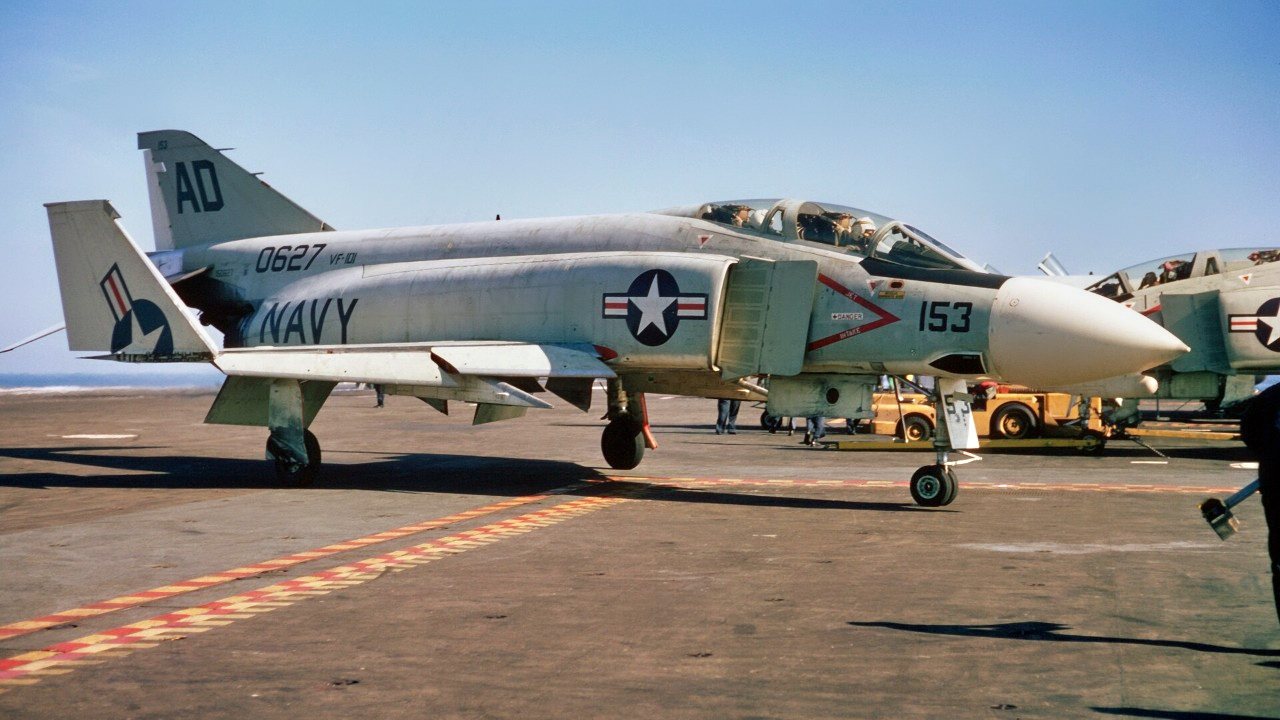Israel’s F-4 Phantom II Fighter Fleet Was a Real Game Changer
The F-4 Phantom II, a third-generation American-built warplane, played a pivotal role in the Israeli Air Force (IAF) from the 1960s until its retirement in 2004. Known for its advanced avionics, versatile weaponry, and durability, the F-4 was integral in Israel's long-range and deep-penetration missions, especially during the Six Day War, the Yom Kippur War, and the Lebanon War.
Summary and Key Points: The F-4 Phantom II, a third-generation American-built warplane, played a pivotal role in the Israeli Air Force (IAF) from the 1960s until its retirement in 2004. Known for its advanced avionics, versatile weaponry, and durability, the F-4 was integral in Israel's long-range and deep-penetration missions, especially during the Six Day War, the Yom Kippur War, and the Lebanon War.

-The Israeli-modified F-4s carried sophisticated radar systems, electronic warfare equipment, and a range of Israeli-made weapons, making them formidable adversaries in both air-to-air and air-to-ground combat.
-While Israel has since moved on to more advanced aircraft like the F-16I Soufa and the F-35 Lightning II, the F-4 Phantom II remains a symbol of Israel's resilience and aerial superiority during crucial conflicts in the mid-twentieth century.
The F-4 Phantom II: A Symbol of Israeli Defiance and Military Strength
The Israeli Air Force extensively used the American-built F-4 Phantom II. This aircraft was part of the third-generation warplane family, and it was an iconic warbird that defined America’s air war in Vietnam. The F-4 Phantom II was also a highly exported plane.
Today, the isolated Islamic Republic of Iran still utilizes some vintage F-4 Phantoms. But back in the 1960s, the F-4 was a gamechanger for the IAF and played a significant, productive role in several conflicts in the mid-twentieth century.
Israel’s F-4 Phantom IIs engaged in long-range missions and delivered substantial firepower.
Specifications
What made Israel’s version of this plane so special was the special modifications installed to meet the specific needs of the IAF. The Israeli F-4s were equipped with advanced avionics, including a more sophisticated radar system, and they carried a variety of Israeli-made weapons. The IAF’s Phantom variants were fitted with electronic warfare systems, enhancing their survivability in hostile environments.
The Israeli F-4s could carry a multiplicity of air-to-air missiles, notably the AIM-7 Sparrow and AIM-9 Sidewinder, along with a variety of air-to-ground munitions. Thus, the IAF’s Phantom was a lethal interceptor fighter capable of engaging both aerial and ground targets.
Defensively, the F-4 Phantom was equipped with chaff and fire dispensers to confuse enemy radar and infrared-guided missiles. The Phantom’s frame could withstand a hit better than most other warplanes.
Important Wars that Israel Used the F-4 Phantom II to Fight
The last squadron of Israel’s F-4 Phantom II fleet was retired in 2004. For nearly half a century, the F-4 was a mainstay of Israel’s fleet. This warbird served in a variety of conflicts, including the Six Day War, the Yom Kippur War, and the Lebanon War. The first two wars were widely considered to be existential fights in which Israel was nearly destroyed by its Arab neighbors.
F-4 Phantoms were one of the symbols of Israeli defiance and ultimate victory over their Arab neighbors.
The IAF chose the Phantom due to its excellent performance, versatility, and ability to carry a substantial payload. That last point, coupled with the Phantom’s long range, made it ideal for Israel’s operational requirements, notably for deep penetration missions into enemy territory. This is a key point, considering how far-flug many of Israel’s rivals are.
The Future of Israel’s Air Force
The F-4 Phantom was a crucial asset for the Israeli Air Force. This system helped to deliver multiple strategic victories to the Israelis in key conflicts they were involved in throughout the last half of the twentieth century.
Inevitably, Israel purchased for themselves other, more advanced warplanes, notably the fourth-generation F-16I Soufa. More recently, Israel has acquired the F-35 Lightning II, a fifth-generation warplane built by the Americans.

Nevertheless, the F-4 Phantom II was a critical platform for Israel when it needed advanced systems most. For that reason alone, the F-4 will always hold a special place in the hearts and minds of Israeli aviators.
Author Experience and Expertise: Brandon J. Weichert
Brandon J. Weichert, a National Interest national security analyst, is a former Congressional staffer and geopolitical analyst who is a contributor at The Washington Times, the Asia Times, and The-Pipeline. He is the author of Winning Space: How America Remains a Superpower, Biohacked: China’s Race to Control Life, and The Shadow War: Iran’s Quest for Supremacy. His next book, A Disaster of Our Own Making: How the West Lost Ukraine, is due October 22 from Encounter Books. Weichert can be followed via Twitter @WeTheBrandon.
All images are Creative Commons or Shutterstock.
From the Vault
Russia Freaked Out: Why the U.S. Navy 'Unretired' the Iowa-Class Battleships
Battleship vs. Battlecruiser: Iowa-Class vs. Russia's Kirov-Class (Who Wins?)


